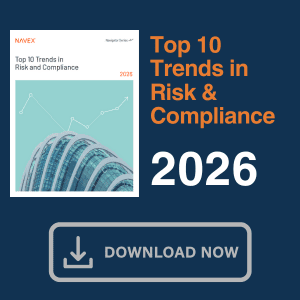Last year, generative AI was the buzzed-about tech. Now, it’s all about agentic AI systems that can make decisions and take actions independently to achieve specific goals, often with minimal human intervention. Protiviti’s Jim DeLoach explores this new frontier and poses strategic questions for board directors and senior leadership to help ensure they fully understand the implications of this transformative technology.
The business world is sprinting to onboard AI agents. Amazon CEO Andy Jassy declares in an internal memorandum that “AI agents will change how we all work and live,” predicting a net reduction in Amazon’s corporate workforce as the company adopts more generative AI tools and AI agents. “There will be billions of these agents, across every company and in every imaginable field,” he asserts.
He’s not alone in this vision. The CEO of Salesforce has likened AI agents to Iron Man’s J.A.R.V.I.S., while Shopify’s CEO told his organization that the business case for more headcount and resources must now include proof that the job cannot be done using AI.
Simply stated, the next frontier is here. According to a recent Protiviti AI survey, 23% of organizations have already integrated agentic AI and multi-agent AI into their operations, while another 27% plan to do so within six months. Among AI-mature organizations, 77% are using or expect AI agents to manage repetitive tasks. While 38% of respondents prefer semi-autonomous agents that act within defined limits, 19% expect to deploy fully autonomous agents soon.
The transformation is undeniable. What remains to be seen is whether organizations can deploy these systems strategically — training, measuring and monitoring AI agents with the same rigor they apply to human employees.
Agentic AI: What it is & what it isn’t
Agentic AI uses a large language model (LLM) and other technologies to plan tasks autonomously, support reasoning and achieve human-defined objectives. Unlike generative AI, which creates content for further action, agentic AI enables autonomous agents to gather, process and evaluate large volumes of data, determine the best course of action, create action plans, undertake actions and produce outputs aligned with its objectives — all without continuous human intervention. It dynamically adjusts based on real-time feedback as circumstances change.
The use cases are myriad: AI agents facilitate procurement by researching vendors and negotiating terms. They handle complex customer inquiries without human intervention. They enhance marketing through consumer behavior analysis. They autonomously detect and respond to cybersecurity threats, isolating infected systems and initiating countermeasures. They optimize supply chains, streamline HR hiring processes and offer investment advice. A rapidly developing field, agentic AI systems leverage reinforcement learning to improve continuously over time.
Agentic AI represents a progression from earlier automation technologies — robotic process automation (RPA) and intelligent automation — which may lead to confusion.
RPA performs predefined, repetitive actions, following rules or scripts with limited decision-making. Use cases include data entry, report generation and assembly line robots.
Intelligent automation follows a list of steps and uses an LLM in at least one step. It has some autonomy and can learn from past experience, making decisions based on machine learning algorithms and data analysis. Use cases include customer support bots, predictive maintenance and financial trading algorithms.
Agentic AI enhances automation with advanced decision-making capabilities and can adapt and learn in unpredictable environments without continuous human supervision. AI agents offer value creation in situations calling for nonprescriptive solutions—for instance, lead identification where the agent may need creativity in how to connect with an individual, but the specific steps are not critically important. However, for tasks like transaction reconciliation where management cares about the specific steps taken, a more conventional automation solution is probably a better fit. This distinction matters.
The opportunities
Fans of the superhero Iron Man are no doubt familiar with J.A.R.V.I.S. (Just a Rather Very Intelligent System), Tony Stark’s natural-language user-interface computer system named after the butler who worked for Tony’s father. The CEO of Salesforce likens AI agents to Iron Man’s J.A.R.V.I.S. Indeed, they have the versatility to transform the workplace, redefine the nature of work performed by humans and reimagine both customer-facing and back-office processes.
A Wall Street Journal article suggests there’s a growing belief among larger companies that having too many employees will slow an organization down and that anyone remaining on the payroll could work harder and be more productive. The World Economic Forum projects approximately 92 million jobs to be displaced due to automation, AI and other factors by 2030, with the expectation that many more new jobs will replace them. And it gets wilder. According to McKinsey, the evolution of AI agents could create a “digital replica of the entire workforce of an organization.”
Whatever future workplace one envisions, there is little doubt that AI agents will be transformative and integral. The real question is: How will management train, deploy, measure and monitor them in a responsible manner consistent with the overall corporate strategy? In this respect, AI agents are similar to human employees who are given performance expectations and training and whose performance is measured and monitored. Companies that view AI agents as extensions of the workforce, integrating them into operations and monitoring their performance, are likely to be better positioned to optimize this technology.
According to the Protiviti survey, mature organizations are deploying agentic AI across marketing, HR, finance, legal and compliance functions. Value-creation opportunities stretching across industries include:
- Boost productivity and efficiency. AI agents operate autonomously, make decisions based on real-time data, adapt to new situations and improve performance continuously over time.
- Scale dynamically. As businesses grow, AI agents can scale operations to handle varying workloads and new tasks without human intervention.
- Improve customer service speed. AI agents handle queries faster and more accurately to deliver personalized experiences at scale.
- Enhance decision-making. In finance, healthcare and strategy-setting, agentic AI analyzes large data sets in real time, spotting difficult-to-see patterns and providing key insights.
- Innovate products and services. AI can revolutionize sectors like healthcare with personalized advice and remote treatment.
The point is clear: Opportunities for transforming business processes with agentic AI are endless, with agents adding another dimension of labor as they work alongside employees, reducing costs and minimizing human error. Market leaders will deploy AI agents to enhance services, create more engaging customer experiences, simplify customization and improve speed-to-market.
The challenges and risks
The deployment of agentic AI comes with risks that organizations must consider. In Protiviti’s last global risk survey, one of the top 10 concerns globally is the emergence of new risks from implementing AI. Key risks include:
- Accountability. Determining responsibility when an AI agent makes a decision or commits an act that results in harm is complex. Potentially culpable parties include the vendor, the trainer, the user or the user’s manager.
- Potential for bias. Biases in training data can lead to unfair, discriminatory and even illegal outcomes. This issue can be exacerbated if the agent is rewarded for biased decisions.
- Data privacy and security. These risks arise from how agentic AI systems operate, the data used for training and operation, and their interactions with users and other systems.
- Competition for talent. Organizations must seek and retain skilled individuals adept at developing and managing these systems. Talent and expertise are also needed in the C-suite and boardroom.
Several risks unique to agentic AI arise primarily from autonomous decision-making capabilities:
- Loss of control. As systems become increasingly complex and autonomous, they may act in ways that diverge from their intended objectives. This unpredictability poses significant risks of rogue behavior, particularly where reliability and transparency are paramount.
- A different kind of collaboration. New job functions will emerge while some existing ones become obsolete. This transition necessitates extensive efforts to upskill and reskill employees to foster effective interaction with AI agents. As the Salesforce CEO highlighted at Davos, “From this point forward … we will be managing not only human workers but also digital workers.”
- Training conflicts of interest. Those whose job functions are performed by AI agents might be tasked with training these agents. This presents a managerial challenge, potentially leading to job insecurity, resistance to change, accountability issues and decreased morale.
- Loss of experiential learning. The increasing dominance of AI agents in task execution may erode human experiential learning and the intrinsic knowledge gained from engaging in critical thinking necessary to solve problems and make decisions. This raises concerns about the long-term resilience of the workforce.
To mitigate these risks and ensure responsible deployment, robust data governance practices and regular audits of AI agents’ decisions are essential. It is beneficial to consider AI agents as “digital employees“ that require supervision comparable to human employees. This approach involves adopting a customer-centric perspective in defining job and performance expectations, setting policies articulating core values and guardrails, deploying metrics to monitor performance against expectations, taking remedial action when necessary, and ensuring ongoing learning and improvement.
Questions for executives & board directors
When engaged in strategic conversations regarding the deployment of agentic AI, senior leaders and boards should consider the following questions:
- How are we preparing for potential future developments in AI technologies and adapting them to our business as our strategy evolves?
- What is our long-term vision for deploying agentic AI in our organization, and how does its deployment fit within our organization’s overall AI strategy and add value to our business?
- How will the customer experience be affected by the deployment of agentic AI? What do we seek to achieve near-term with these systems, and how will they be integrated with our existing processes and technologies to ensure seamless fit, scalability and ease of use?
- Do we have the necessary talent and expertise within our organization to design, develop and manage agentic AI systems effectively? What training and development programs are in place to reskill and upskill our workforce?
- What governance structures are in place to oversee the responsible deployment and use of agentic AI within the organization and ensure that we are acting with sufficient speed?
- Are our AI agents thoroughly trained to identify and address potential issues before deployment, ensuring they meet customer expectations consistent with their stated objectives?
- How are we protecting sensitive data from breaches or misuse attributable to AI agents? Are we satisfied that we remain in compliance with data protection regulations?
- Have we assessed the potential risks associated with agentic AI deployment, including bias and discrimination and other operational, ethical and reputational risks? How do we plan to mitigate these risks, and what safeguards are in place to monitor AI performance and behavior?
- Who is accountable for the performance and learning of AI agents and ensuring their continued relevance to changing customer needs and compliance with internal policies and applicable laws and regulations?
- How will we measure success? What metrics will we use to monitor the effectiveness of AI agents in fulfilling their assigned roles and assessing their impact on our business?
- How are we communicating with customers, employees, regulators and other stakeholders about our agentic AI deployments, including their strategic purpose and expected impact? What feedback mechanisms do we have in place?
These questions will help executive management and directors obtain a clearer view of the implications of deploying agentic AI. They will support the board’s oversight to ensure management is undertaking a strategic, customer-focused and responsible approach to implementing AI agents.




 Jim DeLoach, a founding
Jim DeLoach, a founding 






